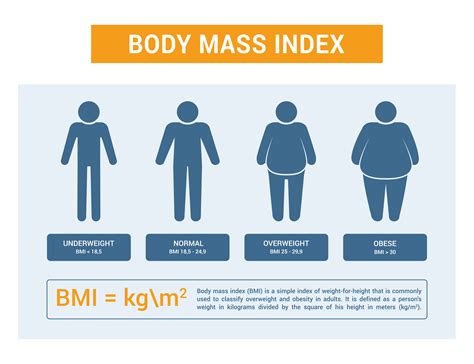Understanding BMI: Is It a Reliable Indicator of Health?

Learn about BMI calculation, interpretation, limitations, and using it with other indicators for a comprehensive understanding of your health and fitness.The Body Mass Index (BMI) is a commonly used tool for assessing a person’s weight in relation to their height, but how reliable is it as an indicator of overall health? In this blog post, we will explore the ins and outs of BMI, from its calculation and interpretation to its limitations and how it can be used in conjunction with other indicators. Understanding BMI is crucial in the context of a society increasingly concerned about health and fitness, but it’s important to look beyond the numbers and understand what they truly mean for our well-being. Whether you’re trying to monitor your own health or simply curious about the science behind BMI, this post will provide you with comprehensive insights into this widely used measurement tool. By delving into the complexities of BMI, we can gain a deeper understanding of its role in our pursuit of better health.
What is BMI?
BMI stands for Body Mass Index, which is a commonly used method for assessing whether an individual has a healthy body weight in relation to their height. It is calculated by dividing a person’s weight in kilograms by the square of their height in meters. This results in a numerical value that is used to categorize individuals into different weight status categories, such as underweight, normal weight, overweight, or obese.
While BMI is a widely used tool to assess body weight, it is important to note that it does not directly measure body fat, and therefore, may not always provide an accurate representation of an individual’s overall health. For example, an athlete with a high muscle mass may have a high BMI score, despite being in excellent physical shape. Conversely, someone with a low BMI may still have a high body fat percentage, putting them at risk for health issues.
Despite its limitations, BMI can still be a helpful screening tool for identifying potential weight problems, as well as assessing the risk of certain health conditions associated with being underweight or overweight. It is important to understand that BMI should be used in conjunction with other indicators of health, such as waist circumference, body composition, and lifestyle factors, to provide a more comprehensive assessment of an individual’s overall well-being.
Calculation of BMI
Body Mass Index, or BMI, is a simple and widely used method for estimating whether a person has a healthy body weight for their height. It is calculated using a person’s weight and height and provides a rough estimate of their body fat. The formula for calculating BMI is weight in kilograms divided by the square of height in meters. Mathematically, BMI is expressed as weight (kg) / [height (m)]^2.
The formula for BMI calculation is relatively straightforward, but it’s important to note that BMI does not directly measure body fat. Therefore, it is possible for individuals with a high muscle mass to have a high BMI, even though they may have a low body fat percentage. Similarly, an individual with a low muscle mass and high body fat percentage may have a normal BMI, even though they are at risk for health problems associated with excess body fat.
Despite its limitations, BMI calculation can still be a useful tool for assessing health risks associated with weight. It can provide a starting point for identifying individuals who may be underweight, overweight, or obese, and can serve as a prompt for further assessment and discussion with a healthcare professional.
Interpreting BMI results
Body Mass Index (BMI) is a widely used tool for assessing an individual’s body composition and determining whether they are at a healthy weight. After calculating your BMI using the formula weight (kg) / (height (m) * height (m)), the next step is to interpret the results. A BMI score falls into one of the following categories: underweight (BMI less than 18.5), normal weight (BMI 18.5-24.9), overweight (BMI 25-29.9), and obese (BMI 30 or higher). It’s important to understand that BMI is not a direct measure of body fat, but rather an indirect assessment of body fat based on height and weight.
When interpreting BMI results, it’s crucial to consider other factors such as muscle mass, bone density, and overall health. For example, a highly muscular individual may have a high BMI due to their muscle mass, but not necessarily be overweight or at risk for health issues. On the other hand, individuals with a low BMI may still have excessive body fat and be at risk for health problems. Therefore, it’s essential to take a holistic approach to health assessment, rather than relying solely on BMI as the sole indicator of well-being.
Additionally, BMI may not be as accurate for certain populations, such as athletes, older adults, and people with significant muscle mass. In these cases, other methods such as waist circumference measurements, body fat percentage assessments, and waist-to-hip ratio calculations may provide a more accurate representation of an individual’s health status. While BMI is a useful screening tool, it should be used in conjunction with other indicators to assess overall health and risk for chronic diseases.
Limitations of BMI
Body Mass Index (BMI) is a widely used tool for assessing body weight in relation to height, and it is often used as an indicator of overall health. However, there are several limitations to consider when using BMI as a measure of health.
One limitation of BMI is that it does not take into account the distribution of body fat. It simply calculates a person’s weight in relation to their height, without considering where the weight is located in the body. This means that an individual with a high muscle mass may be classified as overweight or obese, even though their high weight is due to muscle rather than fat. On the other hand, someone with a low muscle mass and high fat mass may have a normal BMI, despite having an unhealthy amount of body fat.
Another limitation of BMI is that it does not account for differences in body composition between different populations. For example, studies have shown that BMI may underestimate the prevalence of obesity in certain ethnic groups, such as South Asians, who tend to have higher levels of body fat at a lower BMI than individuals of European descent. This means that BMI may not accurately reflect the health status of individuals from diverse racial and ethnic backgrounds.
Using BMI in conjunction with other indicators
Using BMI in conjunction with other indicators
Body Mass Index (BMI) is a commonly used method to determine whether an individual is underweight, normal weight, overweight, or obese based on their height and weight. While it is a valuable tool in assessing overall health, it should not be the sole indicator used to determine an individual’s risk for certain health conditions.
Using BMI in conjunction with other indicators such as waist circumference, body composition, and lifestyle factors can provide a more comprehensive assessment of an individual’s health status. For example, individuals with a high BMI but a low waist circumference may have lower risk for health conditions such as cardiovascular disease compared to individuals with a high BMI and high waist circumference.
Furthermore, considering other factors such as physical activity level, diet, family history, and other health assessments can provide a more accurate picture of an individual’s overall health. Therefore, it is important to use BMI in conjunction with other indicators to make informed decisions about an individual’s health and potential risk for certain diseases.





